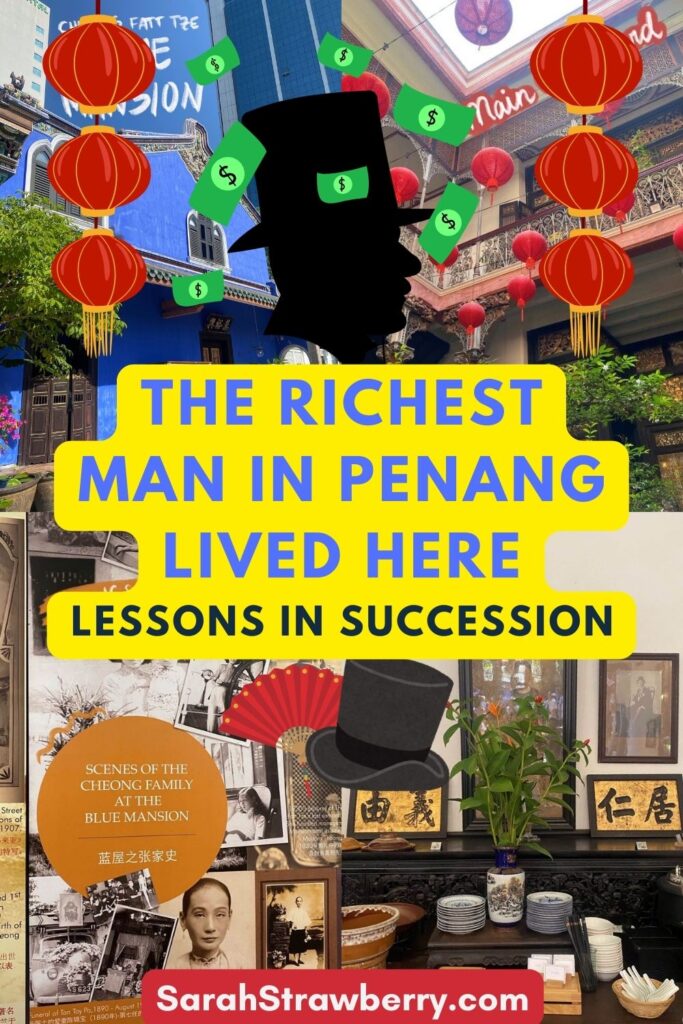Estimated reading time: 11 minutes
How did the majestically grand blue mansion built by the richest man in Malaya fall into a state of disrepair? The problem lies in one thing: succession.
Table of contents
Cheong Fatt Tze’s Story and Legacy

Cheong Fatt Tze was a Chinese businessman who migrated to South East Asia when he was 16 to seek a better life. He was born in a poor family, but worked his way up to become a successful businessman! His mansion in Penang, Malaysia, is famous for its blue facade, a trend from the bygone era. I had the chance to tour this place, and my gosh was everything absolutely dripping with Feng Shui!
Migrating from southern China, Cheong amassed a fortune across the Straits Settlements through his business empires spanning tin mining, rubber plantations, and even the opium trade. He earned the moniker “Rockefeller of the East” for his immense wealth and influence.
Cheong Fatt Tze was born as Chang Chin Hsun in the Guangdong province of China, migrated to Batavia (now Jakarta) in Indonesia and started working as a runner for a water boss. He then married the daughter of said boss and created much of his wealth in British and Dutch Colonies. His business empire encompassed many industries: spices, tin, rubber, oil, and even opium!
“The Last Mandarin” is one of his most famous nicknames. No, not the language- the position! Mandarin (or guān 官) signifies bureaucrat scholars appointed by Imperial China.
His business acumen was so admired far and wide, even Imperial China wanted him to lobby for them. He left multiple illustrious legacies, such as building the first modern railway in China, the first modern bank, and the first winery (which still exists today as China’s oldest and largest winery!).
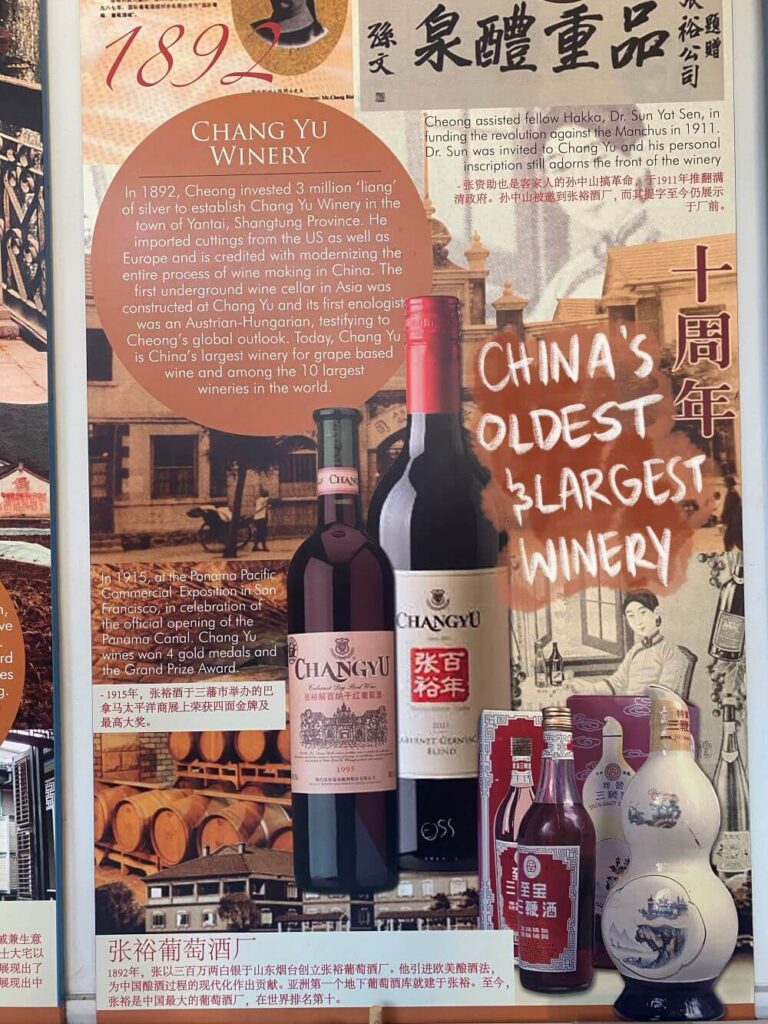
His Eight Wives
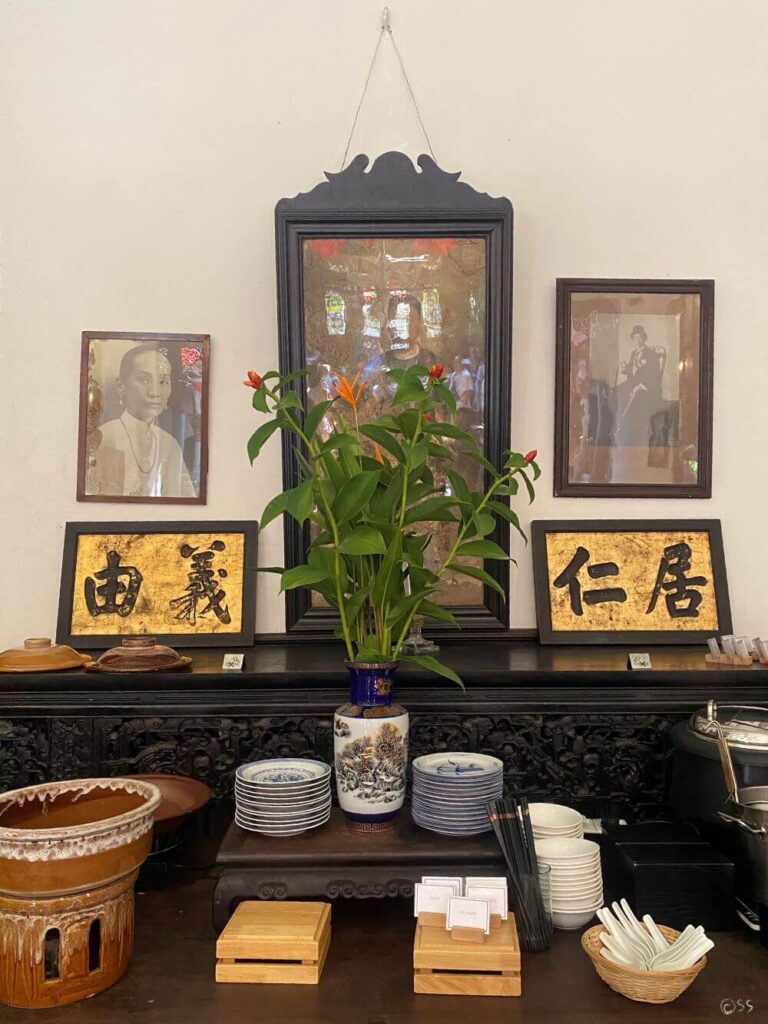
He had eight (yes, eight!) official wives and unofficial concubines- customary for men at the time. Three out of his eight wives lived in the Blue Mansion: wives number 3, 6, and 7. Two of his concubines were also living in Penang. From our tour guide, I found out that they were mostly marriages arranged for business purposes.
Once he created a business in a new city, can he just leave it to a business partner? Of course not! Many people will get cheated out of others’ pure greed, and he wanted to avoid that.
He had arranged marriages with women from good families, who would have his children and take over his flourishing business in that city. This is the reason why his wives lived all across China and Malaya: it’s just business, baby!
Surprisingly, one wife stood out as the most favored one. Tan Tay Po, just 20 years old at the time, was a daughter of a businessman that Cheong Fatt Tze married as his seventh wife. Although there was a 50-year age difference between the two, she was said to be the only love match.
Cheong eventually willed that the Blue Mansion could not be sold until Cheong Kam Long, his son borne by his seventh wife, passed.
The Blue Mansion

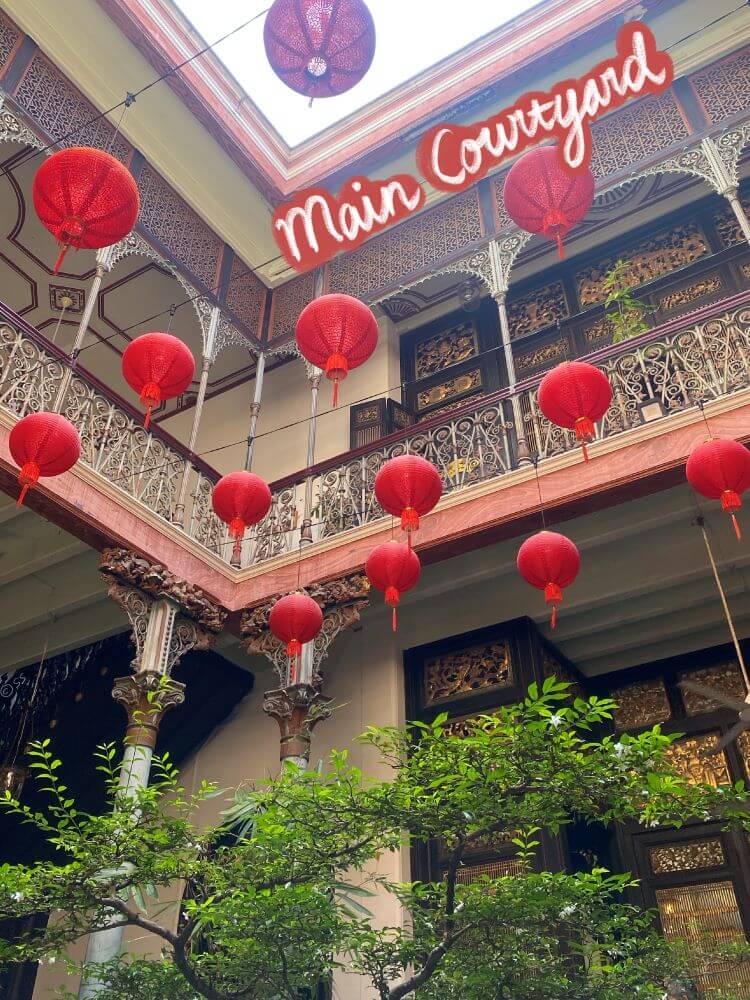
You can’t miss this eye-catching electric blue mansion when strolling around Georgetown, Penang. It is a treasure trove of Chinese, western, and Feng Shui-driven architectural design. Cheong Fatt Tze made sure that he had all the luck in his favor. The construction was not just optimized for luck but also safety, as the 18-inch thick walls of this mansion could withstand a World War 2 bomb dropped outside!
As you approach the mansion on Leith Street, the vibrant blue hues beckon you. The facade’s unique indigo tone is the result of an indigo-based limewash technique commonly found in the internal sections of Chinese temples.
Step inside, and you’re enveloped in a world that seamlessly blends Chinese culture with English art nouveau design sensibilities. It is reminiscent of parts of Suffolk House in England!
Décorating with Feng Shui
The décor of the house heavily reflects Cheong’s strong belief in fengshui principles. He had put up an intricate filigree screen with carvings symbolizing wealth, luck, and peace. When you enter the mansion, see if you can spot two upside down vampire bats symbolizing fortune. This animal was especially lucky for Cheong Fatt Tze, as he was born in Guangdong and is ethnically Hakka.
The grand reception hall features intricate Cantonese timber lattices and ornate carvings symbolizing wealth and peace. The 38 well-preserved rooms include the opulent Han Suites and Tang Suites, styled after imperial Chinese dynasties.
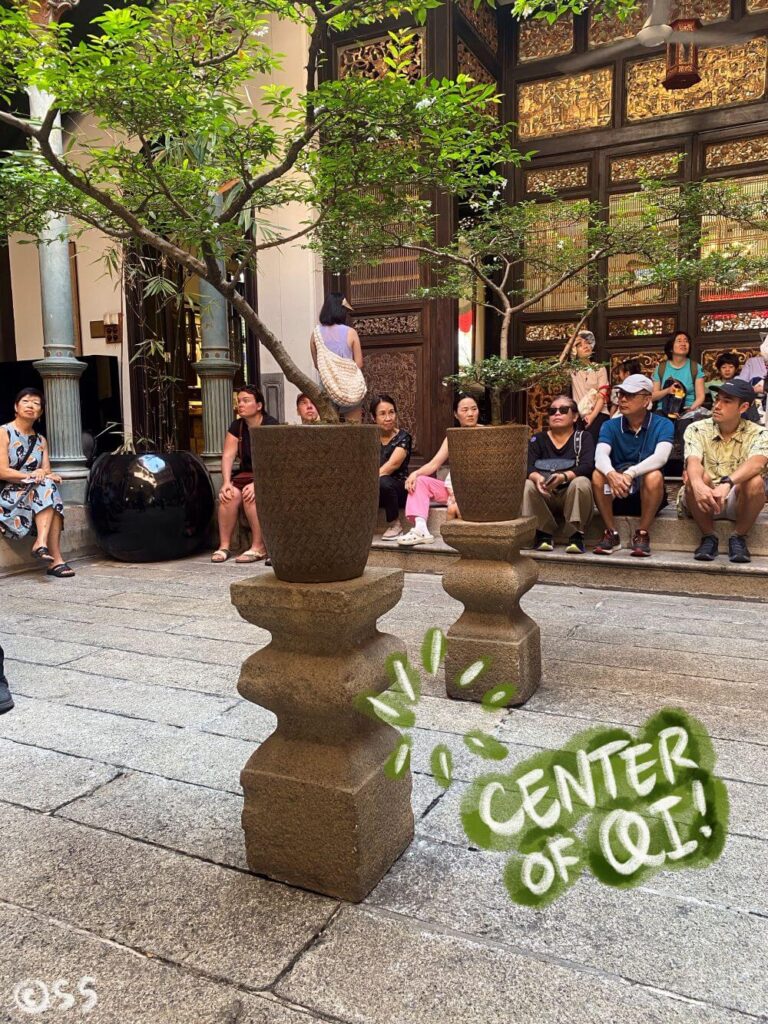
The serene inner courtyards and a courtyard dining room with azure blue tiled walls exemplify this East-meets-West aesthetic. This was also where the mahjong scene in the movie Crazy Rich Asians was filmed!
The courtyard of the mansion is very important, as it is the center of Qi. When it rains, the courtyard collects rainwater- bringing in that money energy! Lanterns hanging from above beautifully decorates this courtyard.
Debts and Disrepair: Lessons on Succession
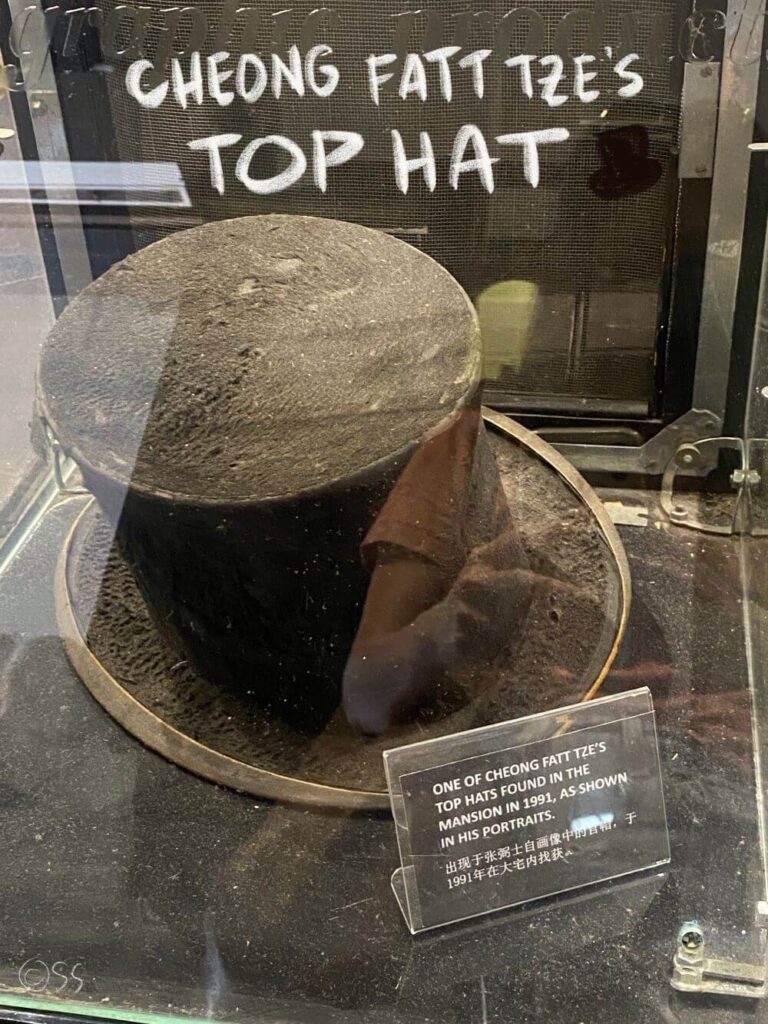
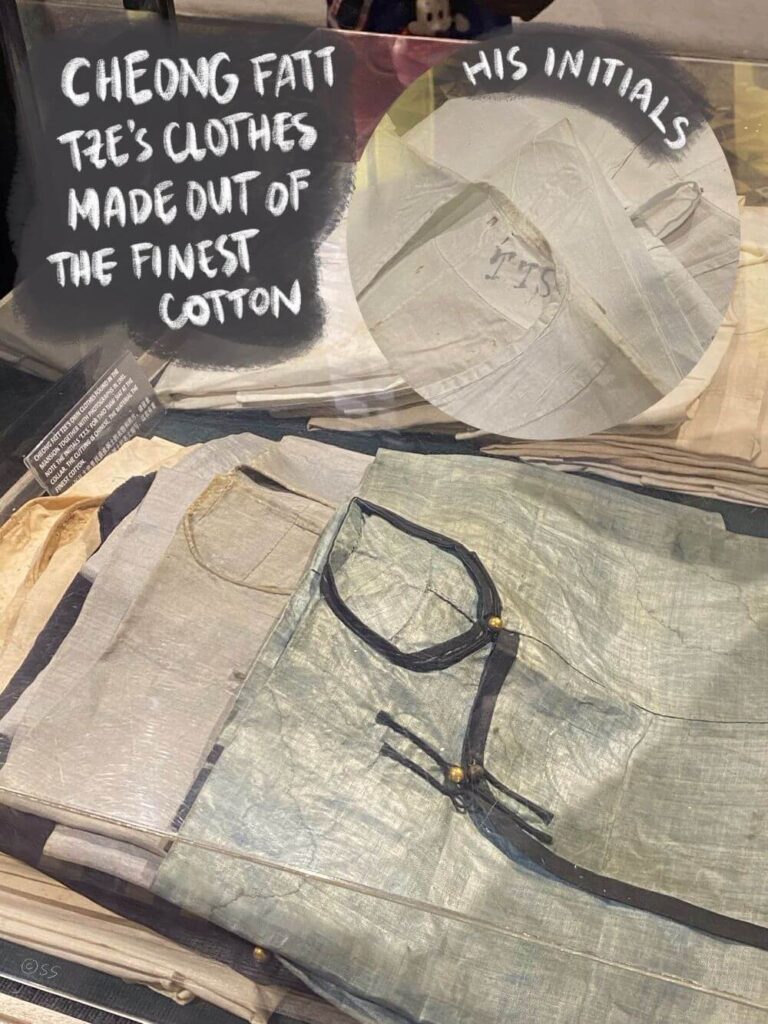
The Last Mandarin spared no expense creating this architectural masterpiece, a reflection of his lavish lifestyle and business success. He used only the best materials like premium China Putongqing wood. However, after his death in 1916, the mansion fell into neglect due to family disputes over inheritance and maintenance costs.
With limited funds, the estate slowly deteriorated. Over 120 people crammed into the premises at one point, sharing just three bathrooms! Exquisite details like marble baths and carved rosewood surfaces decayed as the family struggled to preserve the intricate craftsmanship.
The property became contentious, with relatives awaiting the heir’s death as per Cheong’s will forbidding sale until then. This created a low-trust environment detrimental to succession planning. Lack of preparation for the next generation and entrusting only family proved costly lessons.
With limited funds, the estate slowly deteriorated. Over 120 people crammed into the premises at one point, sharing just three bathrooms! Exquisite details like marble baths and carved rosewood surfaces decayed as the family struggled to preserve the intricate craftsmanship.
The property became contentious, with relatives awaiting the heir’s death as per Cheong’s will forbidding sale until then. Although he willed that the Mansion was to stay with his family with funds allocated for its maintenance, indiscretion left the Mansion to erode with the passing of time. This created a low-trust environment detrimental to succession planning. Lack of preparation for the next generation and entrusting only family proved costly lessons.
Here are some important lessons on succession:
1. Only entrusting family
One of the trustees of the estate was one of Cheong Fatt Tze’s sons- and he misappropriated the funds through sketchy transactions and escaped to Hong Kong. Succession experts recommend to install people who are not family in management positions, as they can keep the family members in their best behaviors; unfortunately this was a lesson learned the hard way in this case.
2. Lack of preparation for the next generation
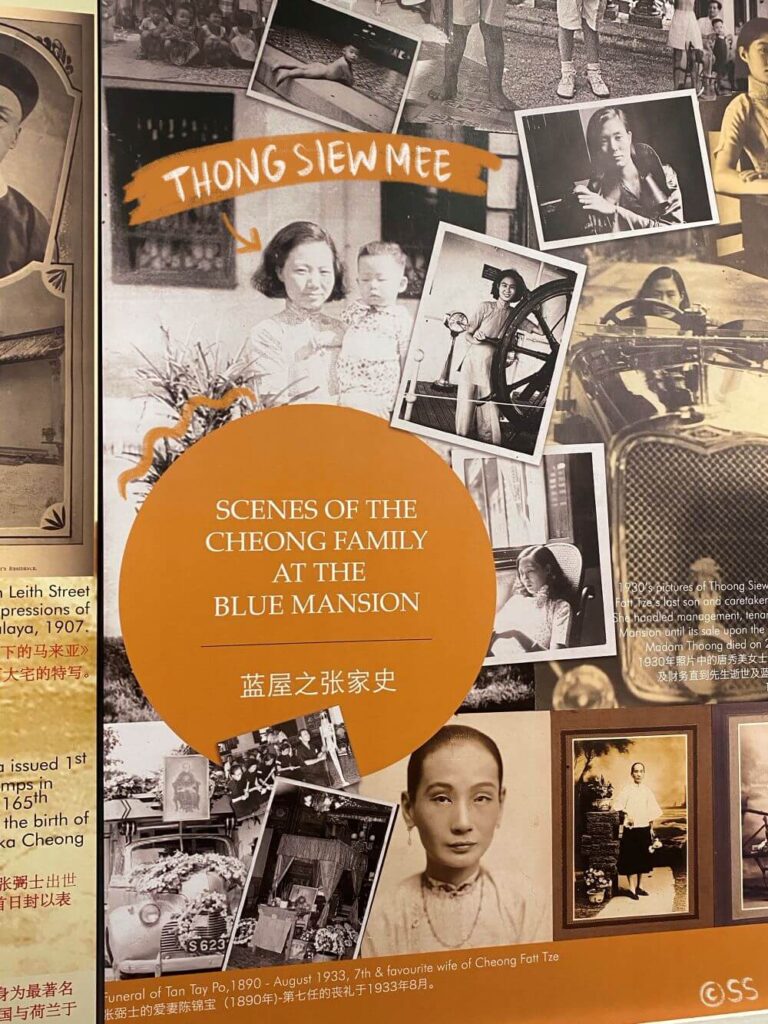
In Cheong Fatt Tze’s will, he sets aside $250 per month for the maintenance of the mansion. This fund though, was mismanaged and the mansion fell into a state of disrepair. The son’s gambling habit did not help either! The wife of Cheong Kam Long, Thong Siew Mee, had to do what she could to keep the family coffers from being totally emptied out. She rented out rooms to a LOT of people, around 120 people, to keep the mansion afloat. This dire situation is a direct reflection for their succession planning (or lack thereof).
Cheong Fatt Tze’s business empire spans China, British colonies, and Dutch colonies. It is unknown if he entrusted these businesses to a particular descendant. According to Harvard Business Review, business succession planning and enough preparation for a designated heir are key for continuing family businesses! As criteria for “readiness” varies from person-to-person, this is the first step to set up for success.
3. Low-trust behaviors
Due to Mr. Cheong’s will, the family could not sell the until Cheong Kam Long died. This created a direct conflict in the family, as everyone wanted to sell the most precious inheritance left- the Blue Mansion! It has been confirmed that every time Cheong Kam Long gets sick, all the relatives gather in the lobby of the mansion to wait for him to pass.
As you can imagine, this situation created a low-trust environment for the Cheong family. When considerable amounts of fortune are divided within a large family, a lack of trust is detrimental to this process. Couple that with lack of succession planning and it is the recipe for nightmarish conflicts!
Touring the Mansion
In the late 20th century, conservationists united to purchase and renovate the dilapidated estate to its former glory. In 2018, it reopened to the general public as a boutique heritage hotel managed by Penang Bao Shuen Sdn Bhd. The 18 guest rooms like the Han, Tang, and Liang Suites fuse Chinese influences with a wide array of amenities.
Guests can indulge in the courtyard swimming pool, lounges, and Indigo Restaurant serving Peranakan cuisine. Daily guided tours at 11am and 2pm offer exclusive access to restricted areas like the iconic courtyard used for “Crazy Rich Asians” filming.
Knowledgeable guides narrate Cheong’s eccentric life, business ventures, and the symbolic design elements. Explore the unique blend of Chinese temples and colonial design in the secret inner courtyards and parts of incorporated Suffolk House.
Last Words
The Cheong Fatt Tze Blue Mansion serves as a living museum, encapsulating Penang’s multicultural heritage through its architecture and storied past. Its journey from neglect to renaissance is a masterclass in preserving cultural legacies through passion and dedication.
Immerse yourself in the grandeur of this iconic estate. Let its vibrant history, exquisite craftsmanship, and ability to transport you through time captivate your senses. The Blue Mansion’s enduring allure reminds us of our rich, diverse heritage.
Regretfully, you cannot enter the mansion without a reservation or a tour booking! Daily guided tours at 11am and 2pm offer exclusive access to restricted areas like the iconic courtyard used for “Crazy Rich Asians” filming. These daily tours cost 25 RM and is one of the most unique experiences I had in Penang. Book them online or in person.
P.S. = If you’re in Penang, check out my complete guide on the city and food you’ve GOT TO try!

Pin It!

